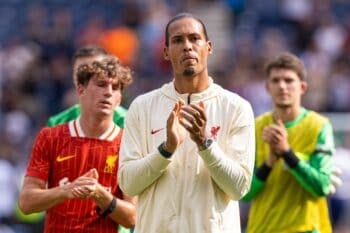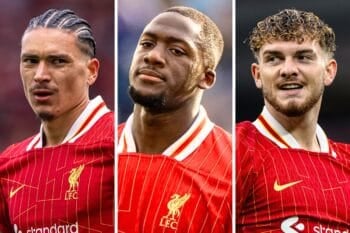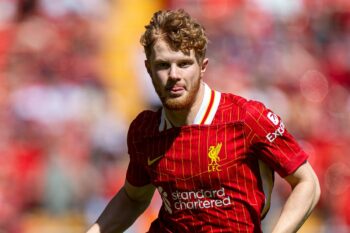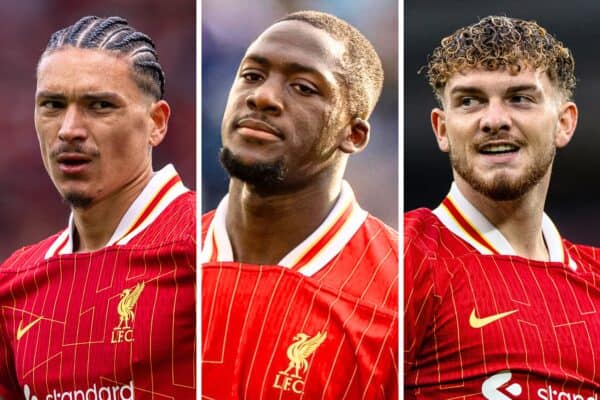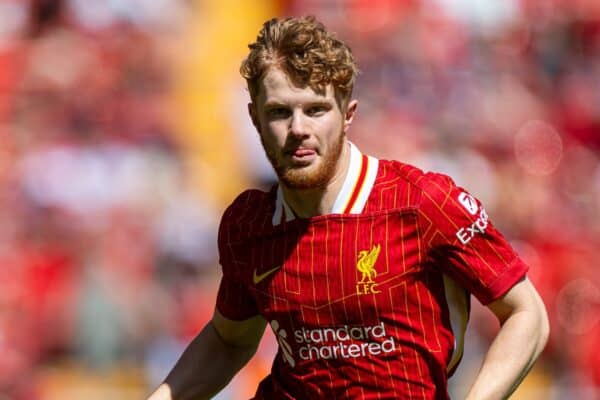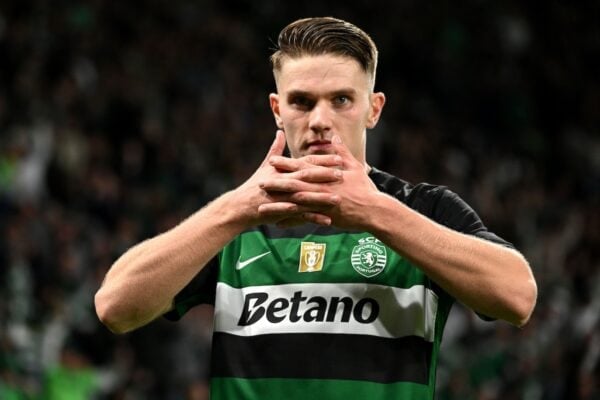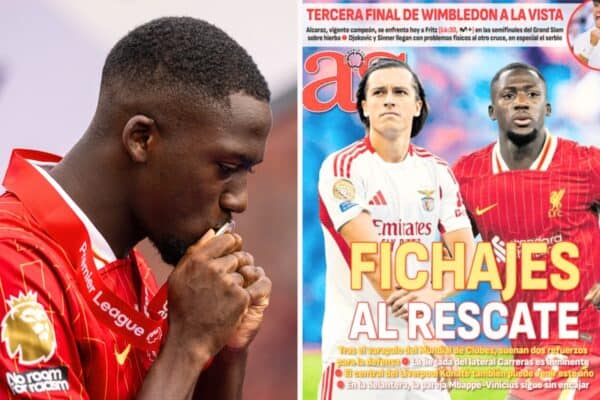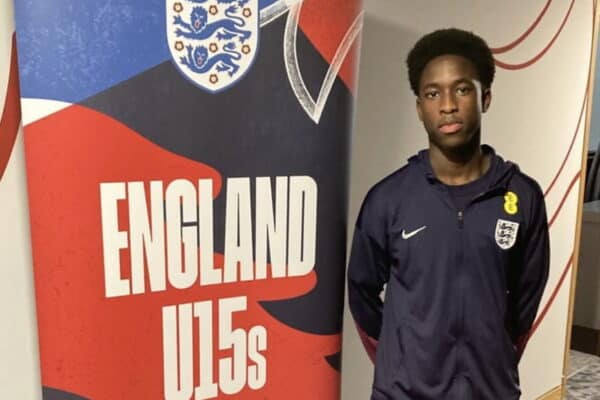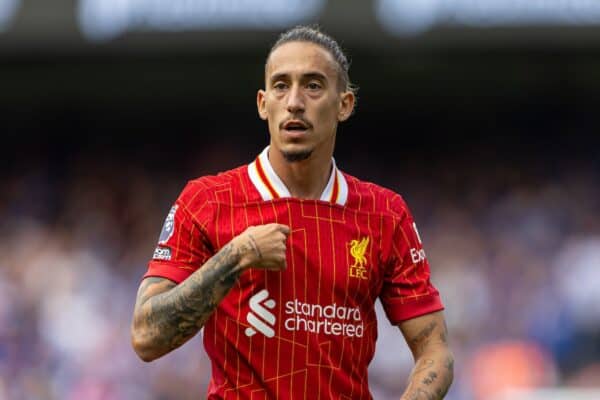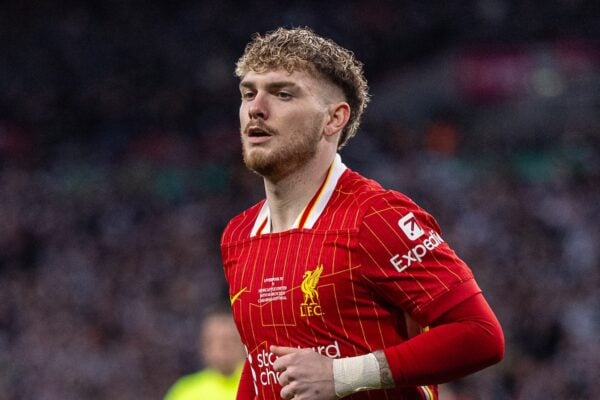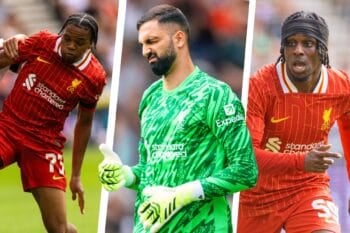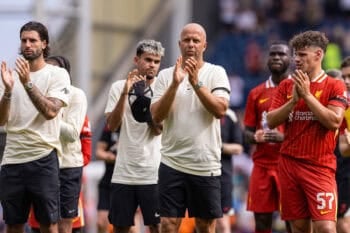How many times have I had to say it, and argue about it? The first time was in 1977 when I’d only been in Canada for a couple of years and Liverpool were on the verge of winning their first European Cup, as well as the League Championship and the FA Cup. I was trying to explain to my Canadian colleagues at work how important it was to me and why I cared so much about a few games taking place thousands of miles away.
‘œFootball in England is like a religion, football in Liverpool is a religion’ I explained.
‘œSo, you mean like the same way that hockey is a religion in Canada then?’ someone was bound to say.
‘œWell, sort of, but much more than that. Way, way more than that. And, not only that, but Liverpool are obviously by far the best team in England, if not Europe and the rest of the world.’
‘œSo you mean that they are to English soccer something like the Montreal Canadiens are to NHL hockey?’
‘œWell if you put it that way then maybe so, but since I know next to nothing about hockey then I’ll have to leave it at that and just say that we are comparing two completely different things.’
I have to wonder now if there really is that much difference. Or is it just that we are talking about two different clubs in two different sports, with each of us thinking that ours is better than the other and not seeing the opposing point of view? I would have been happy to forget those arguments without any further thought, but naturally the takeover of Liverpool FC by George Gillett and Tom Hicks has brought these arguments to mind again recently. Both men are current owners of National Hockey League clubs; one club (Dallas, owned by Tom Hicks) with a recent rise to success, and one club (Montreal, owned by George Gillett) with a glorious past but not so much success in recent years. Of the two clubs, it’s the glorious history of the Montreal Canadiens that interests me more, even though they haven’t seen much success since 1993.
Montreal Canadiens, the most successful hockey club in NHL history, was founded in 1909, making them the oldest club in the National Hockey League. They were one of the founding clubs of the original six of the NHL. They have won more Stanley Cups than anyone else with 24, the most recent one being won in 1993. The next closest franchise to them is Toronto Maple Leafs with 13 Stanley Cups, and in fact Montreal have won more Stanley Cups than all other Canadian clubs combined (19 in all with Toronto’s 13, Edmonton’s 5, and Calgary’s 1) since the NHL was formed. That’s eerily familiar when compared with Liverpool’s record 18 League Championships – but none since 1990, and five European Cups – being as many as all other English Clubs combined. Montreal are also the only club to win five consecutive Stanley Cups, and managed to win six out of ten times during the 1970’s. Again, that’s eerily familiar as a team that once dominated a league but has since struggled to reclaim that outstanding former glory, just as Liverpool dominated the 1980’s but have not won the league title since then.
In 1926, the club moved into the newly built Montreal Forum, making it their permanent home until 1996. The building itself became a shrine to hockey fans all over the world, with people coming to Montreal and wanting to just enter the building and experience the extraordinary atmosphere of the place; just like visitors to Anfield do. The dressing rooms were the centre of the mystique that surrounded both the club and the building. As former goaltender Ken Dryden describes it in ‘œThe Game,’ (1983):
‘œIt has the look and the feel of a child’s bedroom. Shin pads, shoulder pads, socks, jocks, gloves, skates, and sweaters lie in twenty little heaps on the floor. Players in various stages of dress move easily about, laughing and shouting in equal measure. It is too big to be intimate, about the size of a large living room, too antiseptic and bright to be cosy. ‘¦
‘¦Only higher, above the chrome racks and near the ceiling, is it clear that this is a dressing room unique to one team.
‘œAlong the west wall and along parts of two others, team plaques, dark brown and lettered in gold, hang in two rows, one plaque for each season from 1918 to the present. Each offers just bare-bones information – the year, the names of team owner(s) executives, coaches, trainer(s), and players (in two columns), the regular season place of finish, and ‘œStanley Cup Champions’ or nothing at all.
‘œ’¦ the names increasing from twelve to more than twenty as hockey became a free substitution game; then, as entrepreneurs gave way to corporations, to see ‘œOwner’ become ‘œChairman’, to see ‘œVice President, Corporate Relations, Executive Vice-President and Managing Director appear.
‘œAcross the room, there is something else. For journalists, it is le différence, the glimpse that tells the story. Large, photoed heads of former Canadiens players now in the Hall of Fame gaze down at the room from a horizontal row, and beneath them, their words in French and English to each of us below:
NO BRAS MEURTRIS VOUS TENDENT LE FLAMBEAU,
A VOUS TOUJOURS DE LE PORTER BIEN HAUT!
TO YOU FROM FAILING HANDS WE THROW THE TORCH,
BE YOURS TO HOLD IT HIGH!
The words are from ‘œIn Flanders Fields’ which was written by Lt. Col. John McRae during World War I. Again, there’s an eerie connection with a poem of wartime used as inspiration for players through the years, similar to The Kop at Anfield being named in honour of the Battle of Spion Kop from the Boer War.
 After the Montreal Canadiens left the Forum in 1996 the site was listed as a place of historic and cultural significance, and the area was converted to a shopping and entertainment complex. On that site is a bronze statue of the legendary player Maurice ‘œThe Rocket’ Richard. One of the entrances has a large bronze Montreal Canadiens crest cemented into the sidewalk, with the 24 banners commemorating the Stanley Cups around it. Also, inscribed in the cement are the words ‘œPour toujours fier’ which translates as ‘œForever proud.’ We can guess that when we finally move from Anfield to our new stadium, there will be at least one statue (Shankly, and hopefully Paisley as well), and a memorial plaque to commemorate the old location that served as our heart and soul for so many years. Surely that will have something similar with the crest, the trophies won, and ‘œYou’ll Never Walk Alone’ inscribed into the marble, or cement, or bronze of the plaque. Would we have it any other way?
After the Montreal Canadiens left the Forum in 1996 the site was listed as a place of historic and cultural significance, and the area was converted to a shopping and entertainment complex. On that site is a bronze statue of the legendary player Maurice ‘œThe Rocket’ Richard. One of the entrances has a large bronze Montreal Canadiens crest cemented into the sidewalk, with the 24 banners commemorating the Stanley Cups around it. Also, inscribed in the cement are the words ‘œPour toujours fier’ which translates as ‘œForever proud.’ We can guess that when we finally move from Anfield to our new stadium, there will be at least one statue (Shankly, and hopefully Paisley as well), and a memorial plaque to commemorate the old location that served as our heart and soul for so many years. Surely that will have something similar with the crest, the trophies won, and ‘œYou’ll Never Walk Alone’ inscribed into the marble, or cement, or bronze of the plaque. Would we have it any other way?
The Montreal Canadiens hockey club has always believed in tradition, and that is reflected in the continuity of management of the club. Former players become talent scouts, coaches, and managers. That’s obviously a similar philosophy to Liverpool’s ‘œboot room’ traditions, where Shankly’s assistant Paisley became the new manager when Shanks retired, and then former players became coaches, who in turn later became managers, and so on. It was no coincidence that the final game that the Canadiens played in the Montreal Forum was against the Dallas Stars; both Bob Gainey and Guy Carbonneau were members of the Dallas squad at that time, as General Manager and team captain respectively, and both were formerly Canadiens captains earlier in their careers. Hence the final game to be played at the fabled arena was as much a celebration of the glorious history of the club as it was also a form of testimonial to the club and the players.
At the end of that last game played in The Forum, a phalanx of former team captains passed a ceremonial torch all the way from the most senior at one end, finally handing it off to the then captain Pierre Turgeon at the other, who then carried the torch to the new building in a procession that also carried the championship banners and retired player jerseys to their new home. (It is also said that the ghosts that haunted the corridors of The Forum followed along, but that’s just a rumour ‘“ or is it?)
The fabled Montreal Canadiens hockey club was up for sale in 2001 when an American, George Gillett, stepped in with the only offer to purchase the franchise. The club already had their new arena, the Molson Centre (named after Molson Breweries, the owners of the franchise at the time) after leaving the famous Montreal Forum in 1996. The new arena later became known as The Bell Centre (le Centre Bell), when the naming rights came up for renewal under Mr. Gillett’s ownership.
 The great fear from the fans’ point of view was that this was an American owner who wouldn’t understand the culture of the club and the proud traditions that they held dear. But, their fears were dispelled immediately when Mr. Gillett quietly assumed ownership and made no changes in the running of the club. His preference is to let those who know what they are doing continue to do so, and let the club prosper in their hands. In 2003, Bob Gainey was hired as General Manager following a few years of mediocrity of results for the club. Gainey is a former Canadiens captain (1981-89) and Hall of Famer (1992), who certainly understands the traditions of the club. He in turn hired Head Coach Guy Carbonneau and Assistant Coach Kirk Muller in 2006, both of whom were former Canadiens captains themselves. So much for the fans’ fears that Gillett would ‘œAmericanise’ their beloved club! With all of that in mind, we can feel confident that Mr. Gillett will not attempt to make Liverpool a team in his own image, and he has stated several times that he is delighted to have David Moores accept a place on the Board as Lifetime President as well as keeping Rick Parry in charge as Chief Executive.
The great fear from the fans’ point of view was that this was an American owner who wouldn’t understand the culture of the club and the proud traditions that they held dear. But, their fears were dispelled immediately when Mr. Gillett quietly assumed ownership and made no changes in the running of the club. His preference is to let those who know what they are doing continue to do so, and let the club prosper in their hands. In 2003, Bob Gainey was hired as General Manager following a few years of mediocrity of results for the club. Gainey is a former Canadiens captain (1981-89) and Hall of Famer (1992), who certainly understands the traditions of the club. He in turn hired Head Coach Guy Carbonneau and Assistant Coach Kirk Muller in 2006, both of whom were former Canadiens captains themselves. So much for the fans’ fears that Gillett would ‘œAmericanise’ their beloved club! With all of that in mind, we can feel confident that Mr. Gillett will not attempt to make Liverpool a team in his own image, and he has stated several times that he is delighted to have David Moores accept a place on the Board as Lifetime President as well as keeping Rick Parry in charge as Chief Executive.
The Montreal Canadiens hockey club and their fans believe very strongly in tradition, they have a worldwide following of highly knowledgeable fans, and even though they have not achieved the same success in recent years as they once did during their years of League dominance, they are still highly respected throughout the world of hockey, and have retained a huge core of dedicated fans. It’s possible that we, as Liverpool FC and our fellow supporters, are not all that different to the Montreal Canadiens hockey club and their fans. Perhaps fate has brought us together under our new owner because of our similarities, and perhaps we should make a concerted effort to understand each other more than we do at present. We can celebrate each others’ past achievements, and encourage each other toward future glory.
But then again, we’re not exactly the same and never will be. Trying to compare Liverpool FC and football with Montreal Canadiens and hockey is like comparing English with French-Canadian. It just might not be possible to understand or appreciate each other’s point of view any more than we can understand people who speak a different language and come from a completely different cultural background. Perhaps instead it is best if we celebrate our differences from each other and take pride in our uniqueness. ‘œVive le Différence’, eh?
Keith Perkins
Many thanks to fellow LFC Vancouver member Andy Neumann, our resident hockey expert, for reviewing a first draft of this article, correcting some mistakes, and offering some helpful suggestions.
